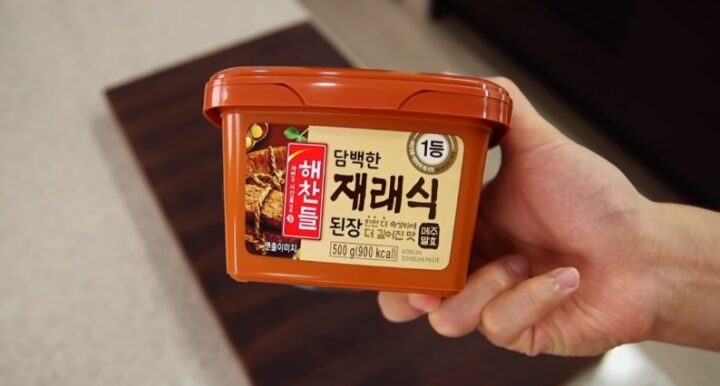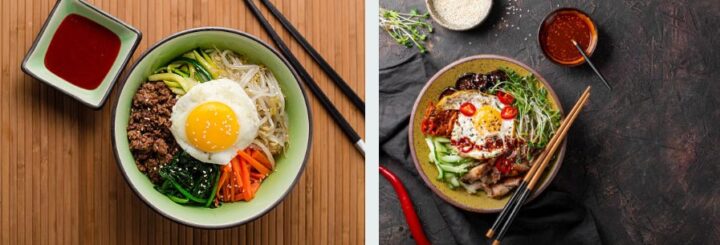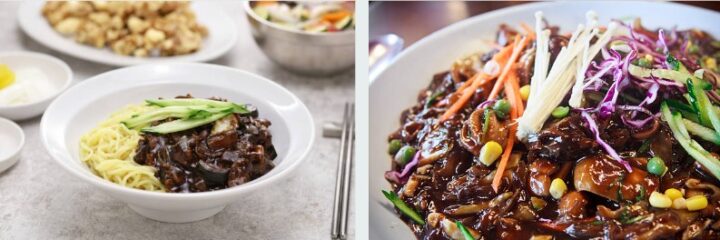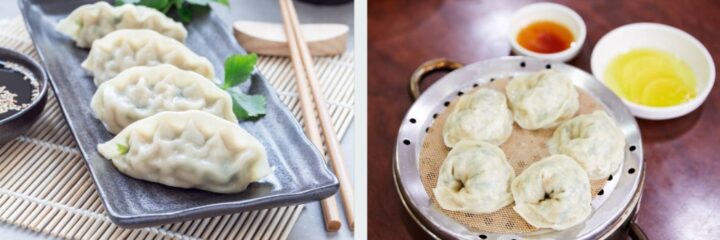Traditional Korean Food: 8 Dishes You Must Try Once!
You’ve probably tried or at least heard about the amazing Korean barbecue, right? It’s like this super fun thing where they bring raw meat to your table and you cook it yourself while chatting away. But guess what? Traditional Korean food is way more than just barbecue!
When I ask people why they love Korean food, they usually talk about barbecue first. And hey, I get it, it’s delicious! But let me tell you, there’s a whole world of yummy traditional Korean dishes out there waiting to be explored.
As someone who loves food (seriously, I’m like a food detective) I’m here to show you the awesome side of Korean cuisine. We’ll discover 8 tasty dishes that’ll make your taste buds dance with joy.

The Special Ingredients in Korean Cooking
In traditional Korean cooking, certain ingredients are like secret weapons that make the food taste amazing. These special ingredients take regular meals and turn them into something truly extraordinary.
Just like in other Asian cuisines, Korean cooking relies heavily on soy sauce, garlic, and ginger. These ingredients alone can make your taste buds dance with excitement. But what really sets Korean food apart are two super cool ingredients: gochujang and doenjang.
Gochujang is this awesome fermented chili paste, while doenjang is a fermented soybean paste. They’re like the superheroes of Korean cooking! You might have tried ssamjang, which is a mix of these pastes served as a dipping sauce in Korean barbecue joints.

But here’s the thing: gochujang and doenjang aren’t just for dipping – they’re for cooking too! They add this amazing spicy kick and a deep, rich flavor that makes every dish a flavor-packed adventure for your taste buds.
I get my gochujang and doenjang from my local Asian grocery store, and let me tell you, once you start using them, you won’t be able to stop. They add such a delicious depth to your dishes! While Korean food has tons of great ingredients, these two are like the VIPs of the pantry.
They’re not just extras – they’re essential for making your home cooking taste like something out of a fancy restaurant.
Types of Traditional Korean Food
Korean food is like a flavor-packed journey that’ll leave you craving more! Here are some of my absolute favorite types of food and dishes that I think everyone should try:
1. Kimchi

Kimchi is like the rockstar of Korean side dishes, and let me tell you, it’s got a special place in my heart. This fermented wonder is usually made from napa cabbage and Korean radish. But there are tons of different types, each with its special twist.
What makes kimchi so awesome? Well, it’s all about the flavors. Picture this: tangy, spicy, a hint of the sea, and garlic goodness all in one bite. It’s like a flavor explosion that’ll make your taste buds dance with joy!
But here’s the really cool thing about kimchi – it comes in all sorts of varieties. Some kinds have a strong seafood taste, while others are more mild.
And get this – there are even vegan versions for all you plant-based eaters out there! With so many options, there’s definitely a kimchi for everyone.
If you’ve tried kimchi before and weren’t a fan, I get it. But trust me, there’s a whole world of kimchi out there waiting for you. Try different kinds, from different places, or go for a vegan version – you might just find your new favorite snack!
2. Tteokbokki

Tteokbokki is here to have your taste buds dancing with joy. This delicious dish is like a party in your mouth, with soft and chewy rice cakes swimming in a sauce that’s spicy, sweet, and oh-so-satisfying.
Remember that gochujang we talked about earlier? Well, in tteokbokki, the superstar ingredient gives the dish its unforgettable flavor. The combination of gochujang with other yummy stuff in the sauce creates a flavor explosion that you won’t soon forget.
Tteokbokki is served as an appetizer in restaurants, setting the stage for an epic dining experience. But if you’re out and about exploring the streets of Korea, you’ll find tteokbokki served in small bowls or on sticks for easy snacking on the go.
3. Bibimbap

While all the dishes I’ve mentioned hold a special spot in my heart, I’ll admit that bibimbap is a bit lower on my list of favorites. That’s not because it’s not amazing – it’s just that the competition is tough! I like my bibimbap without the runny egg yolk, but if you’re a fan, you’re in for a treat!
Bibimbap is like a tasty puzzle of rice, veggies, meat, and that famous runny egg yolk, all served up in a hot clay bowl. The fun part? You get to mix everything creating a delicious mash-up of flavors and textures.
And to take it up a notch, there’s usually an extra sauce on the side for even more flavor excitement.
4. Jjigae

Now, let’s talk about a dish that’s hands down my favorite – classic Korean stew, jjigae! This hearty stew is like a warm hug in a bowl, with meat or seafood, veggies, and a mix of seasonings that scream Korean deliciousness.
Jjigae is a culinary masterpiece, thanks to ingredients like gochujang and doenjang that give it that signature Korean flavor. And one of the best versions? Kimchi jjigae! It combines the bold flavors of kimchi with the cozy goodness of stew. It’s like a flavor explosion in every spoonful!
If you’re looking for a dish that’s packed with bold flavors and plenty of broth, jjigae is the way to go. Whether you need something to warm you up on a chilly day or you just want to treat your taste buds, jjigae is sure to hit the spot.
5. Bulgogi

Bulgogi is a popular dish among fans of Korean food, including yours truly! If you love beef, this one’s for you. Bulgogi features thinly sliced beef that’s been marinated to perfection. Every bite burst with flavor and melt-in-your-mouth tender goodness.
You can also grill them to make it even more delicious! The name “bulgogi” comes from a North Korean dialect, where “bul” means “fire” and “gogi” means “meat.” Pretty neat, huh? It just adds to the dish’s interesting backstory and cultural significance.
Whether you’re enjoying it on its own or as part of a barbecue feast, bulgogi is guaranteed to satisfy your cravings for tasty and flavorful food. With its juicy beef and amazing marinade flavors, it’s no wonder why bulgogi is loved by foodies globally.
Read this post if you are a lover of Traditional Spanish Food
6. Dak Galbi

Dak-galbi is the perfect dish for those who are not beef lovers but like spicy dishes. This mouthwatering dish features stir-fried chicken and veggies smothered in a delicious gochujang sauce.
You might recognize the word “galbi” from Korean BBQ spots, where it usually means beef ribs. But there are no chicken ribs in dak-galbi. It’s a fun little twist that adds to the charm of this already amazing dish.
Dak-galbi has its roots in Chuncheon back in the 1960s. It became super popular because it used affordable white meat chicken, making it a hit among students and soldiers. It just goes to show that sometimes the simplest dishes have the biggest impact!
What makes Dak-galbi so awesome? Well, besides its interesting history, it’s all about the flavor. Each bite is overflowing with bold, spicy goodness that’ll leave you wanting more.
7. Jajangmyeon

Jajangmyeon is another popular traditional Korean food. It features noodles coated in a mouthwatering fermented black bean sauce. It is known for its savory richness and is so deliciously addictive that you’ll find yourself going back for seconds!
Jajangmyeon has an interesting backstory – it comes from Chinese immigrants. Those immigrants took it to Korea from their homeland, where it is recalled as “zhajiangmian.” But over time, it evolved into the beloved Korean classic that we know and love today.
I had my first taste of jajangmyeon in Spain, at the Yatai Market, and it was an unforgettable culinary experience. While it was delicious, I couldn’t help but think it could be even better.
That’s why I’m excited to hunt down a spot in Canada that serves up amazing jajangmyeon, or maybe even plan a trip to South Korea to try it at its absolute best!
Jajangmyeon is a perfect blend of culinary traditions and innovation, making it a dish that transcends borders and delights taste buds everywhere.
8. Mandoo (Korean Dumplings)

Mandoo aka mandu holds a special place in Korean culture, especially during Lunar New Year celebrations representing good luck and prosperity. These tasty Korean dumplings are the stars of traditional dishes like Mandu-guk.
You can add them to a flavorful beef or anchovy broth, or tteok mandu guk, which features cylindrical rice cakes. Mandoo recipes often include ground beef or pork and are made with various fillings. However, you can also find chicken or vegetarian options.
The filling is flavorful with garlic, ginger, and soy sauce, giving it a delicious savory flavor. One of the best things about mandoo is how versatile and convenient it is. You can make them ahead of time and freeze them, which is perfect for busy households or when you have guests over.
And that’s a wrap on this post! I hope you’ve enjoyed diving into this traditional Korean food and dishes beyond just Korean BBQ and have found some inspiration for your next cooking escapade. Even though these dishes might seem simple, they’re close to my heart as they’re the ones that sparked my love for Korean cuisine.
I’m excitedly looking forward to exploring even more Korean culinary treasures in the future. Korean food has truly become one of my favorites, and I just can’t get enough of its bold flavors, fascinating history, and wide range of dishes.


